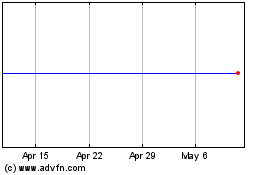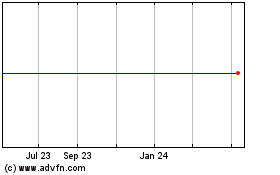The decision by BP PLC (BP, BP.LN) to put $20 billion into a
Gulf oil-spill-damage fund, and then to cut its dividend, provided
clarity on two key issues that have clouded the outlook for the
company. But the moves don't erase the political and financial
uncertainty that BP will face as it struggles to contain the
fallout from one of the biggest oil spills in U.S. history.
To pay for the multi-billion-dollar tab, a total that won't be
known for months, BP also is examining asset sales and other ways
to free up available cash.
The developments came after BP Chairman Carl-Henric Svanberg,
Chief Executive Tony Hayward and other executives met in the White
House with President Barack Obama and senior officials for more
than four hours.
The company's financial condition was fresh on Obama's mind when
he spoke after the meeting. "BP is a strong and viable company and
it is in all of our interests that it remains so," Obama said.
Obama emphasized the $20 billion isn't a cap, adding that BP will
pay the full costs of the clean up.
The preliminary deal benefits BP because it will be able to
deposit money into the escrow account over time, instead of through
a lump-sum payment. According to the White House, BP will
contribute $5 billion per year over a four-year period, including
$5 billion within 2010. "BP will provide assurance for these
commitments by setting aside $20 billion in U.S. assets," the White
House said in a statement.
But BP still faces uncertainty, with jitters in the financial
markets about the company's liabilities and anger among U.S.
Democrats on Capitol Hill.
BP now must determine how to finance the $20 billion escrow
account. Svanberg said the company won't pay its dividend for the
rest of the year. BP later announced it planned to reduce capital
spending and increase divestments to about $10 billion over the
next 12 months.
As for cash flow, a quick review of BP's annual report shows it
generates about $10 billion in free cash flow a year--operating
cash flow minus capital expenditures--and spends about $10 billion
a year on dividends, according to Charles Mulford, an accounting
professor at Georgia Tech.
The bigger questions involve future penalties and other costs BP
will face.
On Tuesday, U.S. Geological Survey Director Marcia McNutt told
Congress that "damage recovery will not be determined until very
far down the road when we actually believe we can calculate what
the damage to the environment has been."
BP may be able to seal the leaking well by the end of August.
Assuming oil flows until then, total spill-related costs and fines
could be $50.8 billion under a worst-case scenario, according to
Clear View Energy Partners. That would include about $30.3 billion
in penalties.
Key penalties, such as those arising from the Clean Water Act,
will be determined on oil-flow estimates, and those keep rising.
Late Tuesday, federal and independent scientists said they believe
the well is currently spewing between 35,000 to 60,000 barrels of
oil a day.
But "it might be 10 years before the government recovers those
costs," said Kevin Book, a managing partner at Clear View. "There's
a lot of cash to be earned between now and when that happens."
He also noted that other companies might wind up paying a
portion of the tab. "If borne by a single company, that would be
substantial and pretty close to what the market has discounted," he
said of BP's stock price.
Anadarko Petroleum Corp. (APC) said Wednesday that BP sent it a
bill for oil-spill-related cleanup costs. Anadarko has a 25% stake
in BP leaking Macondo's well.
Financial markets have been on alert. On Tuesday, Fitch Ratings
slashed BP's rating by six notches to near junk level on Tuesday,
citing the potential upfront costs from the spill. On Wednesday,
the cost of protecting BP's debt soared to its highest level ever
before falling again on news of a deal with the U.S. government
over the company's liability for the two-month-old oil spill in the
Gulf of Mexico.
A key issue is political risk. Among Capitol Hill Democrats, "I
don't think that BP's financial situation is ultimately the main
concern," said one Senate Democratic aide. Asked about the risks
that BP wouldn't have the means to pay a giant tab, he said, "I
haven't thought about it in this context." He said that "on the
Democratic side, the push will go forward to make sure they're on
the hook for everything."
Democrats want to avoid what they see as problems with
compensation for the 1989 Exxon Valdez oil spill.
"It's all driven by fact that Exxon (XOM) fought in court for 20
years against paying some claims and people died while waiting on
payment," said Daniel J. Weiss, director of climate strategy at the
Center for American Progress, a left-leaning group close to the
administration.
In May, his group proposed that BP should put money into an
escrow account, saying that BP made $163 billion in profits from
2001 through 2009 and $5.6 billion in the first quarter of
2010.
"Should BP go bankrupt--I don't believe it will--but if BP goes
bankrupt, you have to have money protected for claimants," Weiss
said. The U.S. must "protect people economically harmed by the
spill from both BP dragging its feet in court and from a
bankruptcy."
-By Siobhan Hughes, Dow Jones Newswires; 202-862-6654;
siobhan.hughes@dowjones.com
(James Herron, Katy Burne, Isabel Ordonez, and Shayndi Raice
contributed to this article.)
Cooper Cameron (NYSE:CAM)
Historical Stock Chart
From Jun 2024 to Jul 2024

Cooper Cameron (NYSE:CAM)
Historical Stock Chart
From Jul 2023 to Jul 2024
